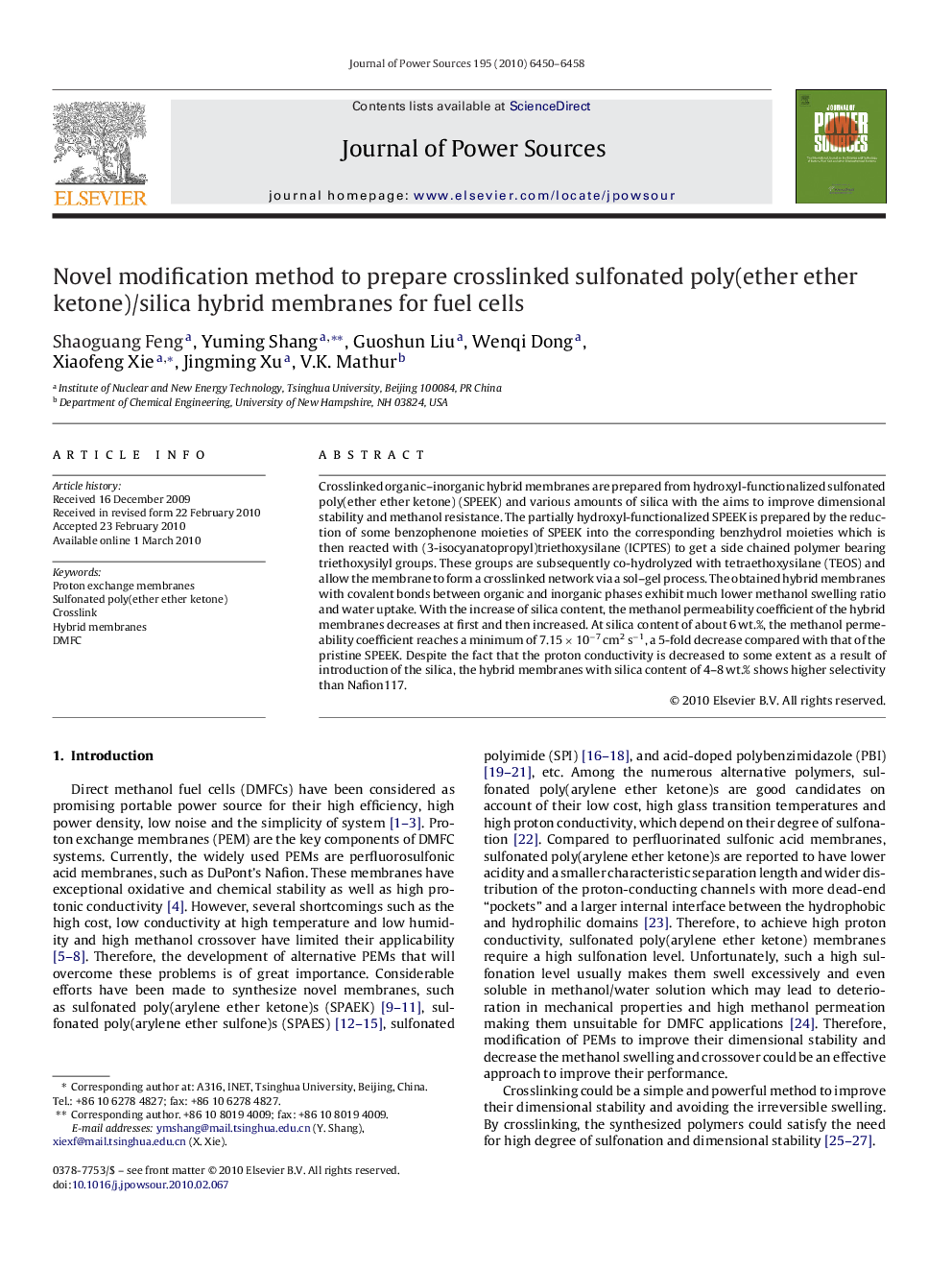| Article ID | Journal | Published Year | Pages | File Type |
|---|---|---|---|---|
| 1289365 | Journal of Power Sources | 2010 | 9 Pages |
Crosslinked organic–inorganic hybrid membranes are prepared from hydroxyl-functionalized sulfonated poly(ether ether ketone) (SPEEK) and various amounts of silica with the aims to improve dimensional stability and methanol resistance. The partially hydroxyl-functionalized SPEEK is prepared by the reduction of some benzophenone moieties of SPEEK into the corresponding benzhydrol moieties which is then reacted with (3-isocyanatopropyl)triethoxysilane (ICPTES) to get a side chained polymer bearing triethoxysilyl groups. These groups are subsequently co-hydrolyzed with tetraethoxysilane (TEOS) and allow the membrane to form a crosslinked network via a sol–gel process. The obtained hybrid membranes with covalent bonds between organic and inorganic phases exhibit much lower methanol swelling ratio and water uptake. With the increase of silica content, the methanol permeability coefficient of the hybrid membranes decreases at first and then increased. At silica content of about 6 wt.%, the methanol permeability coefficient reaches a minimum of 7.15 × 10−7 cm2 s−1, a 5-fold decrease compared with that of the pristine SPEEK. Despite the fact that the proton conductivity is decreased to some extent as a result of introduction of the silica, the hybrid membranes with silica content of 4–8 wt.% shows higher selectivity than Nafion117.
